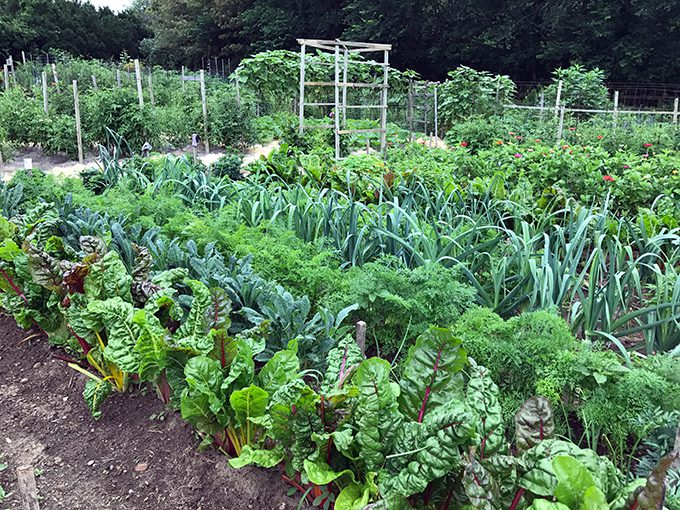Your Vegetable Garden This Week
Your Vegetable Garden This Week
Now that it’s August, there are several things that vegetable growers should be aware of. Here is a checklist of actions that you can be taking to make your garden most productive.
Pick your vegetables promptly! Although this seems obvious, many people either forget to harvest daily or are unaware that some crops require prompt picking. Frequent harvesting not only promotes the production of many vegetables, but for crops such as green beans and summer squash, the smaller produce is the most tasty. Harvest green beans and zucchini every other day. Check broccoli on the same schedule; once the main head has been cut, look for small side heads and cut those when they look like broccoli, even if they are small. (If you let them stay on the plant they will turn into flowers, and the plants will slow production.)
Watch for holes in the leaves. Kale, broccoli, cabbage and other “cole crops” are magnets for the white cabbage butterfly. This small butterfly lays eggs on the plants that hatch into larvae that eat holes in the leaves. Spray with spinosad or Bt, being sure to include Turbo in the tank to make the product stick on the foliage. Repeat applications every week to ten days.
Remove yellowing tomato leaves. If your lower tomato leaves are yellowing or becoming spotted, clip them off and dispose of them. If you haven’t started spraying your plants to slow down the early blight fungus, begin doing so. Use Serenade or Revitalize if the problem isn’t very advanced. If you see lots of spots and yellowing foliage, switch to a copper fungicide and use according to directions through the rest of the growing season.
Water deeply less often. Use a soaker hose or sprinkler, and water in the morning for a two to three hour period every four to five days in very hot weather, and once a week as the temperatures cool into the fall. Hand-watering is never enough.
Give your produce a boost. An application of an organic fertilizer such as Neptune’s Harvest Fish and Seaweed can safely boost the growth of vegetables in early August. Water your garden well and then apply to the soil around the plants, mixing according to directions.
Treat powdery mildew on squash. At this time of year we frequently see powdery mildew on squash plants. If some of the older leaves are covered with the light gray mold, remove them and throw them in the garbage, bury them, or burn them. Spray remaining leaves and stems with Serenade, Revitalize or a copper fungicide, being sure to coat the tops and underside of the leaves as well as the stems.

Pick zucchini every other day so that they don’t grow into green door stops or baseball bats!
Fill bare areas with fall crops! If you’ve harvested the early plantings of garlic, lettuce or other cool-weather crops, don’t let that space go to waste. This is the perfect time to sow more lettuce seeds, carrots, or bok choi seeds. Chard and kale are also good crops that will germinate now and be harvested well into October. Heat loving plants such as beans, peppers and eggplant don’t do as well as the ones listed above.

Many crops will continue producing into October when harvested regularly and correctly. Remove only the oldest leaves on kale and chard, which will cause the plant to continue growing all fall.

Green beans will produce from July into September if they are picked every other day. Fertilizing can also help stimulate new growth and flowers. Use Neptune’s Harvest in organic gardens, or MaxSea if you don’t object to a synthetic fertilizer boost.
Subscribe To Our Newsletter
Sign up for our weekly email about sales and events.
